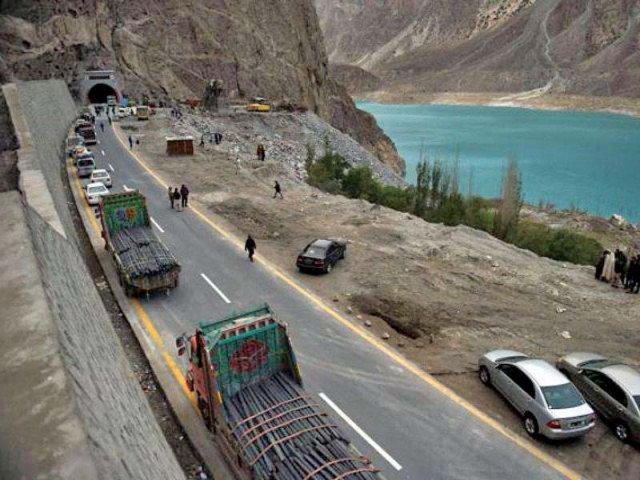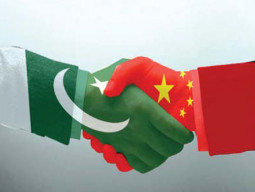
These countries have found that improving the quality of regulations can substantially raise the productivity of their economies.
Regulatory reform is gaining prominence in developing countries as well, as they are beginning to realise that inefficient regulatory regime can hinder the efficient allocation of resources and valuable investment from abroad, as well as raise the possibility of corruption.
Thus, these countries have realised that comprehensive regulatory reform is a crucial part of economic development. Effective regulatory reform consists of many different components, but one of the most important is increasing the level of transparency. Without transparency, any regulatory reform will be crippled since the reform may not give the people what they need, and the people will not know what changes have taken place.
Pakistan’s debt burden high, deficit to exceed official projections: Moody’s
Economic freedom: a formula for success
The 2017 Index of Economic Freedom developed by the Heritage Foundation and the Wall Street Journal in 1995, covering 186 countries in six regions, finds economic freedom advancing worldwide. This is despite challenging economic and political environments based on the property rights, trade freedom, investment freedom and business freedom.
According to this index, economic freedom is signalled by four broad categories, namely regulatory efficiency, open markets, government size and rule of law. The 2017 Index of Economic Freedom ranks Hong Kong, Singapore, New Zealand, Switzerland, Australia, Estonia, Canada, UAE, Ireland and Chile as the top ten economies, which can be considered “free” with economic freedom scores above 80 on the 0-to-100 Index grading scale.
India, Bangladesh, Egypt, Nepal, Russia and China remain “mostly un-free” whereas the index has termed countries including Zimbabwe, North Korea, Venezuela, Turkmenistan and Afghanistan as “repressed” economies. As validated by the example of China and India, a high economic growth may not always necessarily indicate a higher economic freedom; rather, the economically freer countries tend to have much higher per capita incomes. The economies ranked as “free” or “mostly free” in the 2017 index have five times higher per capita income as compared to the economies ranked as “repressed”.
In economic freedom, we stand at 141.
Pakistan’s economic freedom score for 2017 index is 52.8, giving its economy the 141st rank out of 186 economies. Pakistan experienced a negative change of 3.1% in terms of economic freedom, falling from an index of 126 in 2016 to 141 in 2017, causing its performance to remain below the global average of 60.9 and regional average of 60.4.
Pakistan was not only reported among the 73 countries to have experienced a decline in the economic freedom in 2017, but also fell among the list of 16 economies to have recorded the lowest economic freedom scores ever. Other countries, which showed a notable decline, include the Bahamas, United States, Bahrain, El Salvador and Venezuela.
In the Asia-Pacific region, Pakistan was ranked 32 out of 43 economies in 2017 index compared to previously held rank of 26 out of 42 economies in 2016. Pakistan’s economy has consistently been rated “mostly un-free.” Despite the reforms introduced by Pakistan to improve the business environment and encourage private sector led growth, the overall regulatory environment in Pakistan continues to be affected by convoluted administration, and there is little commitment to opening markets.
The index shows that Pakistan has a score of 67.2 for trade freedom and 55 for investment freedom. While trade is somewhat an important facet for Pakistan’s economy, the value of exports has remained low with an increasing rate of imports thus creating a vicious cycle of trade deficit. The root cause for the low export rate is the lack of specific plans in trade policy. There is an absence of a workable plan of action and lack of monitoring on a periodic basis of the implementation of the framework.
General investment climate is improving
With the reforms being brought by the government of Pakistan in general and Punjab government in particular, prospects for the business community have improved, whereas, CPEC is another conducive avenue which is attracting large investors.
Check needed on govt’s money-printing frenzy
The overall investment climate in Pakistan is improving. Nevertheless, several deterrents to investment still exist in the economy, including inconsistency of regulatory and tax rules applied at the federal and provincial levels, inadequate infrastructure, and weak legal protections. The current regime continually attempts to reduce these barriers faced by private investors.
Developing private sector does not mean stifling public sector. As a matter of fact, the public sector would complement markets by creating the conditions for their transparent, competitive and efficient operations and thereby resulting in prosperity of competitive and self-sustaining private sector.
Role of regulatory agencies
A number of government agencies oversee financial and commercial regulatory regimes in Pakistan.
While these regulatory bodies operate independently, Pakistani law provides for recourse against adverse administrative decisions, the legal system remains backlogged and long court delays are common. The Rule of Law Index Report 2016 of the World Justice Project ranks Pakistan 109 out of 113 economies on the regulatory enforcement agenda, thereby reflecting that Pakistan’s regulatory mechanism is extremely poor and among the lowest ranks.
In order to improve the overall regulatory framework and functioning of the system, the future agenda for the regulatory reforms in Pakistan may include efforts to design regulatory and other instruments, such as market incentives and goal-based approaches that are more flexible, simpler and effective.
Since, administrative regulations, through which governments collect information and intervene, have substantial impact on private sector performance, reforms must aim at eliminating regulation that are no longer required, streamlining and simplifying those that are needed, and improving the transparency of application.
Regulatory reform that enhances competition and reduces regulatory costs can boost efficiency, reduce prices, stimulate innovation and improve the ability of economies to adapt to change and remain competitive in global markets.
Dr M Amanullah is chief economist and Myra Mufti is a research associate at the Planning and Development Department, Government of Punjab
Published in The Express Tribune, July 17th, 2017.
Like Business on Facebook, follow @TribuneBiz on Twitter to stay informed and join in the conversation.


















COMMENTS
Comments are moderated and generally will be posted if they are on-topic and not abusive.
For more information, please see our Comments FAQ